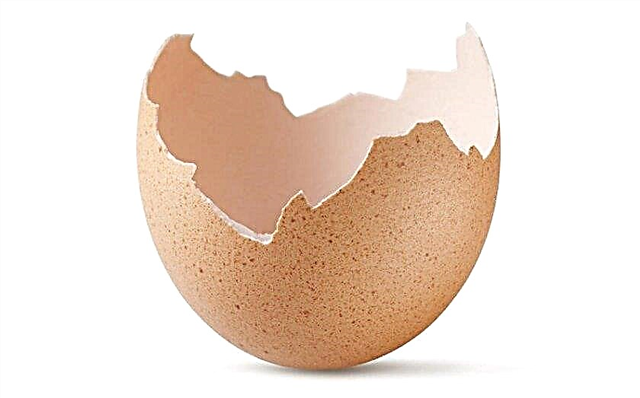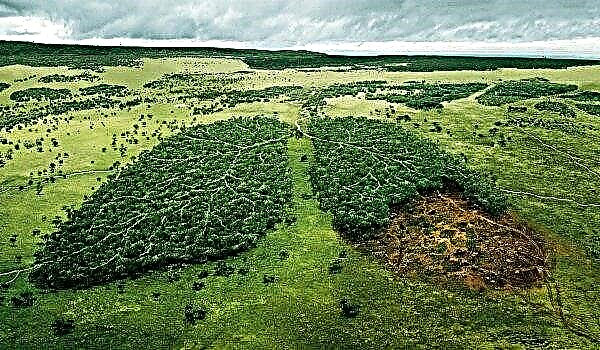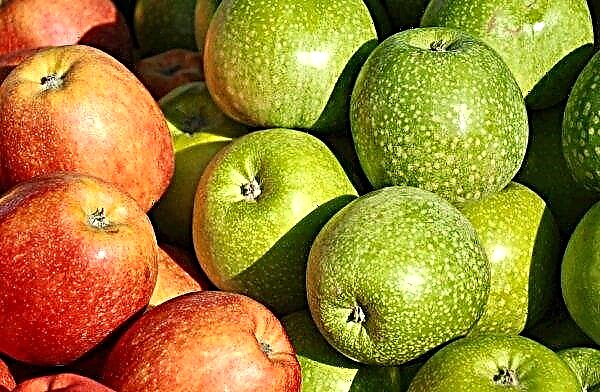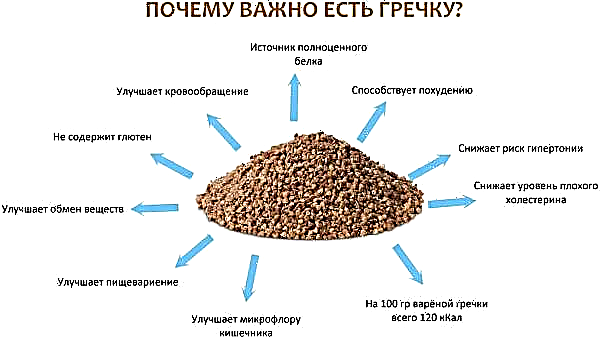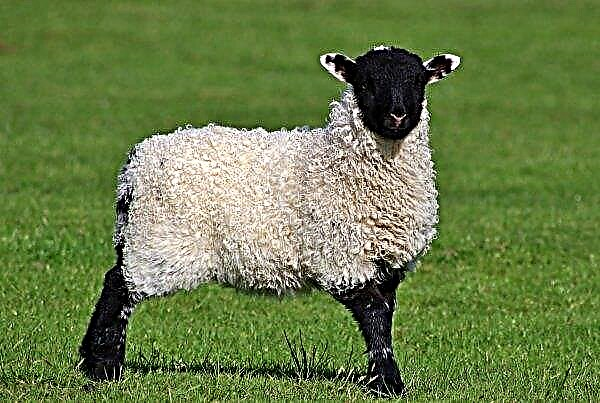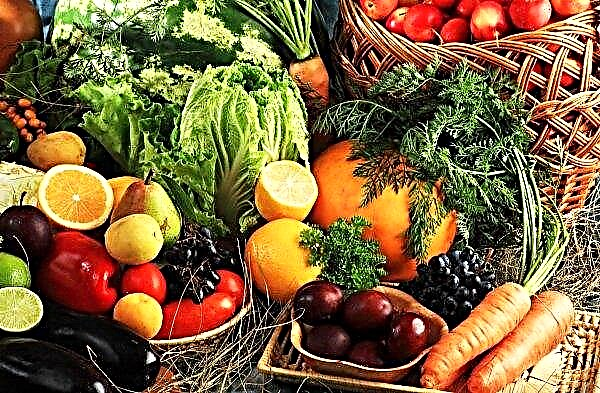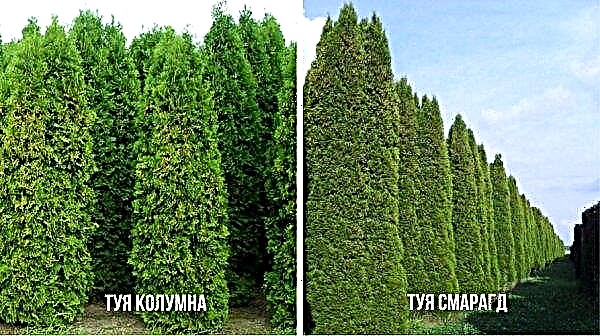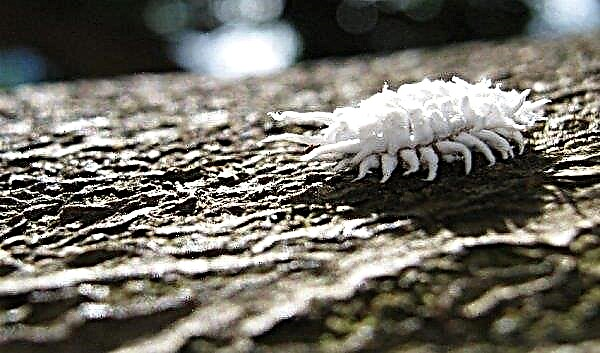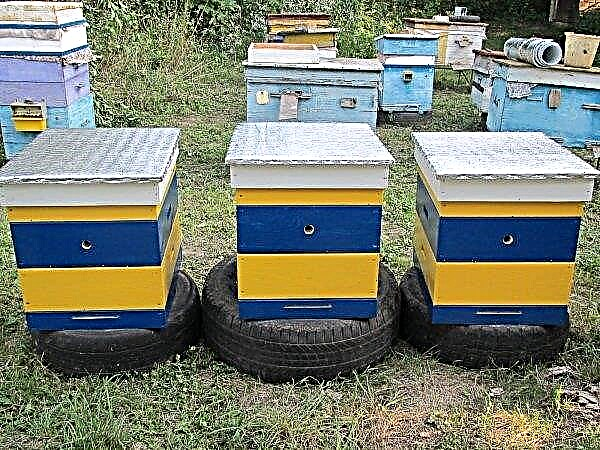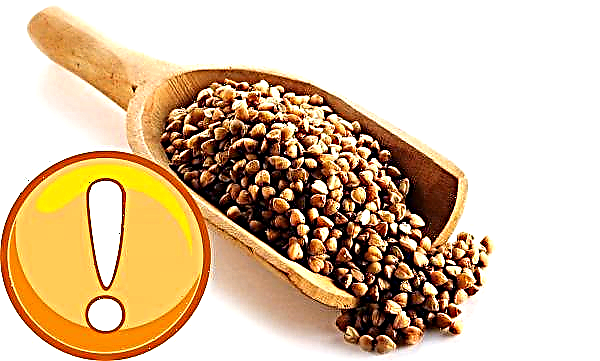One of the most common varieties of apples in Russia, Ukraine and Belarus is Antonovka, which has many subspecies that have evolved from it. It has long and deservedly enjoyed success and popularity among summer residents, due to its taste, high productivity and simplicity in agricultural work. More details about it can be found in the article.
Description and characteristics of Antonovka variety
At the moment, it is not known exactly by whom and when the Antonovka variety was bred. Therefore, it refers to folk selection. Its varieties include such varieties as Zolotaya, Imbrus, Bogatyr, Dessert, Six-gram, Pound, Cherry, Gray, White, Ordinary, etc.
Important! The apple varieties grafted on Antonovka develop better and bear fruit than those on the wild apple.
The main characteristics of the Antonovka variety:
- late autumn or early winter ripening;
- trees are strong, tall (on average up to 7 m) with a round or oval crown;
- skeletal branches stretch upwards, where they branch later;
- leaves are deep green, rounded with short petioles;
- pale pink flowers densely covering tree branches;
- apples are large, round, yellow, smooth, stick firmly on branches, average weight 150 g;
- the pulp is white, sweet and sour taste, juicy;
- begins to bear fruit from 6–7 years;
- has a pronounced smell;
- 100 g of the product contains 44 kcal, 0.3 g of protein, 0 g of fat, 10 g of carbohydrates, 0.5 g of dietary fiber, as well as vitamin C, potassium, magnesium, iron, phosphorus, etc.
Advantages and disadvantages
- The advantages of Antonovka include:
- long-term preservation of apples;
- the fruits are rich in vitamins and minerals;
- universal use: jams, compotes, juices are prepared from it, used in pickled form, etc .;
- prolonged fruiting (30–40 years);
- frost resistant;
- the root system is well developed;
- used for breeding other varieties of apples;
- high productivity;
- not susceptible to scab;
- used not only in cooking, but also in medicine.
- The disadvantages are:
- medium resistance to powdery mildew and fruit rot;
- old trees bear fruit irregularly.
Pollinators
Apple tree Antonovka refers to self-infertile varieties that need pollinators.
Pollinating plants must meet the requirements of:
- the flowering and ripening period must coincide;
- pollinators must produce high-quality pollen annually;
- lack of mutual cross sterility.
Productivity
Antonovka gives the first significant crop 5-7 years after planting a seedling in the ground. The next few years bear fruit annually. Older trees bring up to 200 kg of apples from one tree, but not every year. The maximum yield of gardeners received more than 500 kg from 1 tree.

Transportability
Given that Antonovka belongs to the early winter varieties, the apples collected in September or October are highly transportable, provided that they are properly packed.
It consists in the following:
- only apples torn from the tree are suitable for transportation, since when they are shaken off, they are damaged and begin to rot faster;
- pick fruits should be a little earlier, before reaching technical maturity;
- special containers for transportation must be disinfected and thoroughly dried;
- apples should be stacked in a container so as to avoid fruit striking each other.
Frost resistance
One of the main favorable features of the described variety is its resistance to low temperatures, due to which Antonovka can be grown in regions with very cold climates. Studies by scientists of the physiology of stability of VNIISPK have shown that plants withstand frosts down to -40 ° C.
Did you know? In Manhattan, the apple tree that was planted in 1647 by the American Peter Stuvesant is still growing and bearing fruit.
But this applies to adult trees. Young trees are not so hardy. and in the first years after planting, it is advisable to insulate them for the winter. To this end, mulching of the trunk circle and covering material are used.
Features of planting and care
Antonovka apple trees can be planted in autumn or spring. In the autumn season (until mid-October), it is better to plant seedlings in chernozem soil, in which the tree will take root faster (before the onset of stable frost).

Otherwise, planting should be postponed until spring - until the buds open on the plants. If you plan to plant trees in the spring, then you need to prepare the pit in the fall, if in the autumn, then 2–4 weeks before planting.
Choosing a quality seedling
Properly selected seedlings ensure their quick survival.
Therefore, they are selected according to the following criteria:
- must be annual, up to 0.8 m high;
- roots and stems without signs of damage and wounds;
- roots no shorter than 30 cm, with good branching;
- on the cut - white root;
- the stem under the bark should be bright green.

Choosing a favorable place
When planting seedlings of apple trees of the Antonovka variety, one should adhere to such requirements:
- in order for the fruits to be larger and sweeter, the place must be selected well-lit, without drafts;
- there should be no stagnation of water in the soil. The occurrence of groundwater below two meters in depth;
- sandy loamy or loamy soil with good air exchange is perfect;
- in case of increased soil acidity, lime can be added.
Landing technology
The correct planting of Antonovka seedlings consists of the following steps:
- When digging a hole, it is necessary to leave a distance of 4 m between the trees, and between the rows - up to 6 m.
- The pit should have a depth of 1 m and a diameter of 0.8 m.
- Pour a mixture of earth, humus, compost, 200 g of mineral fertilizers into the prepared depression and make a slide.
- Drive 2 pegs to garter a tree.
- Put a sapling on the hill, spread the roots.
- The root neck should protrude 10 cm above the ground.
- Cover the ground with earth, tamp, make a hole for water.
- Pour with warm, settled water, from the calculation - 2 buckets per 1 tree.
- Tie a sapling to the support.

Watering and fertilizer
At the first time after planting, it is necessary to provide the seedlings with sufficient water. For 1 tree, spend 1-2 buckets. Later, watering is reduced to 3-4 times a month.
Feeding is carried out in several stages:
- The 1st stage is carried out before flowering using urea, with a calculation of 50-100 g per young tree and 500-600 g per adult tree, which must be scattered in the near-stem zone;
- 2nd — during flowering, with a mixture of 200 g of potassium sulfate, 200 g of superphosphate, 5 l of manure and 100 g of urea;
- 3rd — during the ripening of the fruits, 100 g of nitroammophos are introduced;
- 4th — after harvest (300 g of potassium sulfate and superphosphate each).
Important! Mature trees of the Antonovka apple tree give a plentiful harvest in a year, that is, 1 time in 2 years.
Crown formation
Antonovka cultivars begin to form a crown in the second year after planting. In the spring, every year it is necessary to carry out sanitary pruning, removing dry, broken and diseased branches (if this was not done in the fall). When a tree reaches 20 years of age, up to half of all perennial gloves are removed on it.

Trimming is as follows:
- special garden tools are used, well-ground and sanitized (garden knife, pruner, pruner, hand saw);
- from the ground level and before branching leave 50 cm for the zone of the stem;
- cut off all shoots 30 cm above the stem zone;
- in the next year to remove the grown branches on the stem;
- in place of a cut of the main trunk, cut off grown shoots;
- in the first tier leave a branch at a height of 50 cm and two higher at a distance of 15 cm from each other, with all 3 branches growing in different directions;
- cut the branches at the same height;
- in the third year, 50 cm from the branches of the first tier, two more branches should be left (one above the other at a distance of 15 cm), aligning them with each other;
- remove the appeared branches from the main trunk, and shorten the cent;
- in a year, lay another branch 40 cm from the lower tier;
- close the places of cuts with garden varieties, clay mash (1 part mullein, 2 parts clay, hay or straw), cement mortar (3 parts sand, 1 part cement, water, drying oil).

Winter preparation
Preparation of Antonovka for wintering begins after the harvest.
It consists of such events:
- feed apple trees with fertilizers corresponding to this period;
- dig the soil near the trunk;
- clean the near-stem zone from weeds;
- carry out sanitary pruning of the crown, removing diseased and dry branches;
- water trees abundantly;
- cover the trunk area with mulch;
- treat with a disinfectant (copper or iron sulfate, urea), whitewash the mushrooms with lime;
- trunks of young trees to tie burlap;
- use a protective net from small rodents.
Possible growing difficulties
Sometimes an apple tree of the Antonovka variety can succumb to the effects of pests and diseases such as:
- codling moth - caterpillars of the moths bring harm to the fruits, which gnaw through the flesh and lead to rotting apples. An effective method of pest control will be the treatment of trees with the help of such preparations as Coragen (0.2 ml of working solution per 10 liters of water), Aktara (0.01 g / 1 m²), Confidor (0, 2 l / 1 ha);

- powdery mildew - manifests itself in the form of a white coating on the leaves and shoots, as a result of which the foliage curls, dries and falls off. Effective against this disease will be 2% solution of colloidal sulfur (20 g per 10 liters of water), 3% solution of Bordeaux liquid, Topaz (10 ml per 10 liters of water), a solution of potassium permanganate (3 g per 10 liters of water);

- fruit rot - a fungal disease characterized by the appearance of small dusty vesicles on apples, which grow over time and affect the whole fruit of the news. 3% Bordeaux liquid, “Fundazole” (10 g per 10 l of water), “Chorus” (2 g per 5 l of water), “Azofos” (working solution 100 ml per 10 l of water) help to destroy it;

- scab - occurs on the leaves and fruits of trees in the form of small spots of yellow-green color, which later turn black and crack. Against this disease, it is recommended to use a 2% solution of colloidal sulfur, 1% solution of Bordeaux liquid, the drug "Gamair" (10 tablets per 10 liters of water), "Chorus" (2 g per 10 liters of water);

In addition to spraying trees with special solutions, you also need to constantly carry out sanitary pruning of the crown, destroy diseased branches, foliage and weeds, which may contain sources of infection, add organic and mineral fertilizers, bleach trunks in a timely manner.
Harvesting and storage
Antonovka apples are harvested in September and October, in dry weather. So the fruits will be stored longer. Normally, the shelf life is 3 months. Plus, the beautiful presentation and useful substances will also last longer.
Did you know? Specialists found Antonovka apple trees, which are more than 200 years old.
The optimal conditions for this would be:
- it is necessary to prepare wooden or cardboard boxes lined with paper in the middle;
- sort apples by selecting beautiful and healthy ones from spoiled ones;
- gently spread the fruits in the prepared containers, trying not to erase the natural apple coating;
- store separately from other vegetables and fruits;
- it is best kept in a dry room at a temperature of 0 ° to + 2 ° C and air humidity of 90–95%;
- periodically check apples, selecting rotten ones;
- provide the room with air ventilation.
Antonovka is considered one of the best varieties of apples bred using folk selection. Professional gardeners and gardeners-lovers appreciate it for its ease of cultivation, high productivity, excellent taste and versatility in use.






